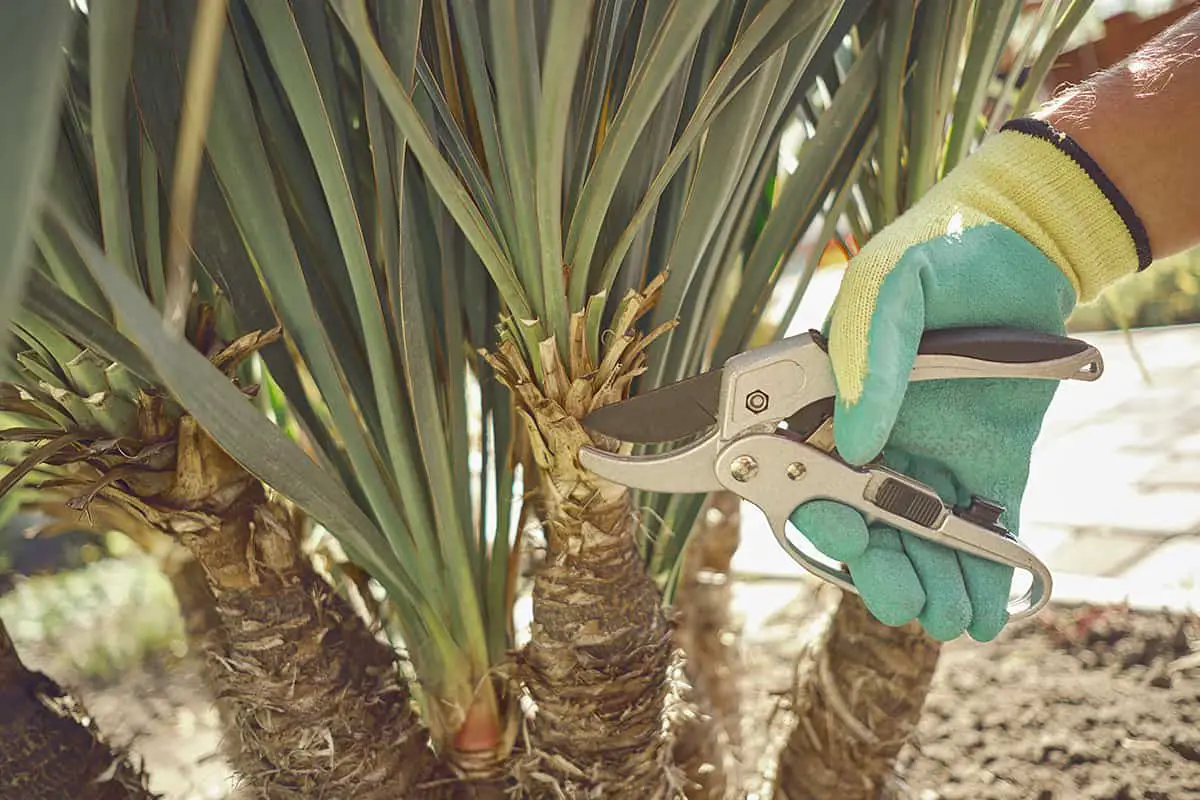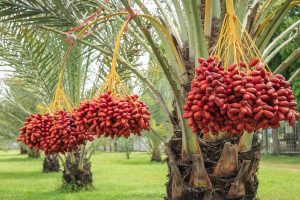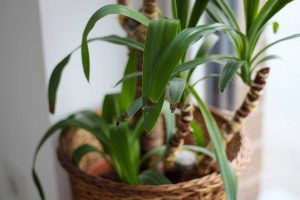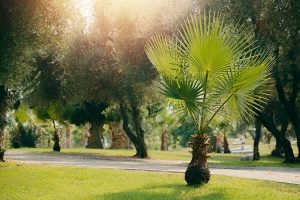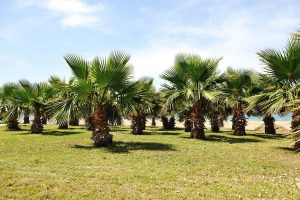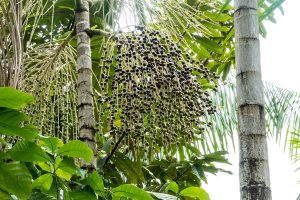Palm tree trimming or pruning is a contentious issue among gardeners. Some gardening experts recommend that a palm tree should never be pruned, while some palm tree owners routinely trim their trees every year.
If you are thinking about trimming back some of the fronds on your palm tree, you’ll need to understand how this could affect the overall health of the tree and assess whether it is necessary. If trimming the palm tree is a requirement, follow our palm tree trimming guide below.
Table of Contents
Do Palm Trees Need to be Pruned?
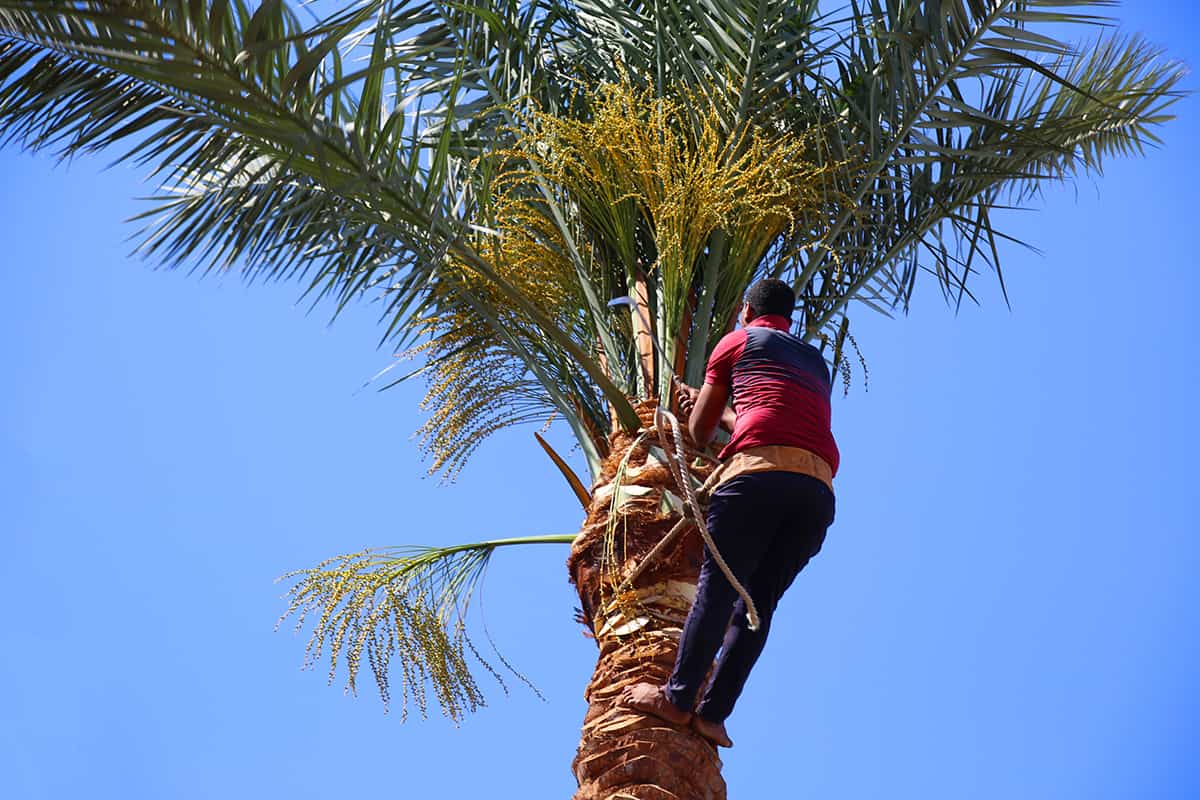
Palm trees are very low maintenance when it comes to their pruning requirements, and actually, most palm trees can happily live their whole lives without the need to be pruned at all. In the case of most trees, pruning them or thinning out the branches can improve the health of the tree by enabling better airflow and more light to reach the leaves of the tree. Pruning trees can also encourage more new growth to be produced, making the tree fuller and stronger.
However, when it comes to palm trees, none of these things are true. In fact, pruning a palm tree unnecessarily is actually very detrimental to its health. Pruning a palm tree can make it weak, cause damage that invites disease or pests, and reduce the lifespan of the tree.
Pruning the leaves of a palm tree will not encourage new growth, so you may also find yourself with an unattractive palm tree that looks quite bare if you decide to prune it. Palm trees are not technically trees, so it makes sense that they don’t behave the same way as most other trees when pruned.
When to Trim a Palm Tree
There are some situations when a palm tree will need to be trimmed, but this is generally for the convenience and safety of the people living near the tree, and it is not for the health of the tree itself. Instances where trimming a palm tree is warranted include the reasons listed below.
Improve visibility
If there are fronds of a palm tree that are blocking visibility, then these may need to be removed, even if they are healthy. This might be the case if the palm tree is blocking too much light getting to your property, or it will be especially important if palm trees are causing visibility issues on a roadway.
Proximity to structures
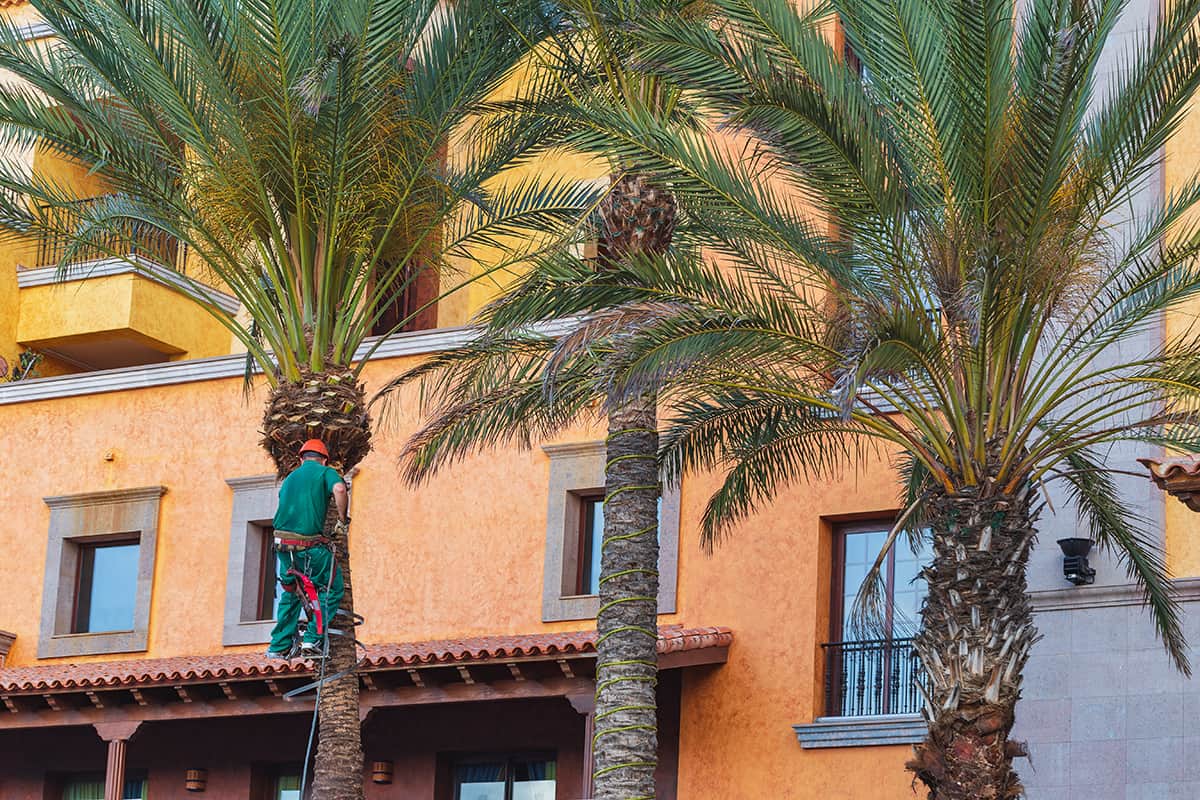
If a palm tree is growing too close to a building or other structure, then the fronds may need to be trimmed back to avoid them causing damage.
Fire hazard
The lower leaves on a palm tree gradually die back over time, becoming brown and taking on a paper-like texture. On most palms, these will take many years to naturally fall off the tree, and this can mean that on the underside of the tree, there is a large collection of dead leaves. In the height of summer, this can be a fire hazard, so it is best to remove the dead leaves in spring.
Damage or disease
If your palm tree has any fronds which are damaged or diseased, then these should be removed, especially in the case of diseased leaves, because the disease could spread to other fronds or nearby trees. Dead growth can also be removed once the entire leaf has turned brown and it no longer has any energy to return to the tree.
Unwanted flowers and fruits
If you aren’t interested in harvesting the fruit of your palm tree, then you can remove the flowers or fruits when they appear. This is because the production of flowers and fruits takes a lot of energy from the tree, so if you remove them, then the energy will be redirected and help the growth of the tree.
Eliminate pest shelters
The dead mass of leaves on the underside of the healthy fronds can be appealing to creatures you probably don’t want living around your property, such as rats and cockroaches. If you trim away the dead growth, this will remove the possibility of these pests taking up residence in your palm tree.
Guide to Trimming Palm Trees

Assess the tree
Before you leap into trimming the palm tree, first take a good look at it from ground level and assess which fronds need removing and where to start. If you are going to need a ladder to reach the fronds, then make sure you have a friend to hold the ladder steady or hire a professional to trim the tree for you.
Prepare tools
To trim the fronds, flowers, or fruits from a tree, you’ll need some hand pruners, a gardening saw, and some rubbing alcohol. Clean the blades with rubbing alcohol to ensure they are clean, as this will prevent any cross-contamination between plants and remove the risk of spreading disease. Wear safety gloves and safety glasses when trimming the tree, along with long trousers and full-length sleeves.
Prune
When you are ready to trim the tree, start from the bottom and work your way up. This will help you to get a clearer view of the upper fronds and will free up space for you to work in. If you are removing dead growth, be sure the fronds are fully brown before removing them.
If there are any green parts left on the frond, leave it to be pruned at a later date because it is still in the process of returning energy to the tree. For dead fronds, make sure you do not cut any closer than 2 inches from the trunk of the tree. This will prevent damage to the trunk which can invite disease and pests. You will be left with an inch or two of dead growth on the tree, but this will fall off naturally in time.
Always cut rather than pull old leaves, as this can cause unnecessary damage. Once some of the fronds are removed, you may spot other fruits or damaged fronds which need to be pruned, so you can move on to these next. Be sure to never remove more than one season’s growth in one pruning session, as this can greatly harm the health of the tree and cause it to weaken.
Clean up
After the trimming is complete, remember to clean up any of the mess that has fallen to the ground. Flowers, fruits, and fronds remaining on the ground can attract pests. If you have removed diseased fronds, then these will need to be properly disposed of to avoid spreading the disease further.
When to Avoid Trimming Palm Tree
A palm tree should never be trimmed or shaped for purely aesthetic or cosmetic purposes. The belief that this will strengthen the tree or encourage new growth is incorrect. Removing healthy fronds is very detrimental to the health of the tree, and it will cause its growth to slow, so this should only be done when necessary for safety reasons, for example, to improve visibility on the road, or eliminate a fire hazard.
Palm trees need a large amount of healthy green fronds in order to build up an energy supply and sustain good levels of growth. If the green fronds get removed, this process is inhibited, and the tree will be significantly weakened.
